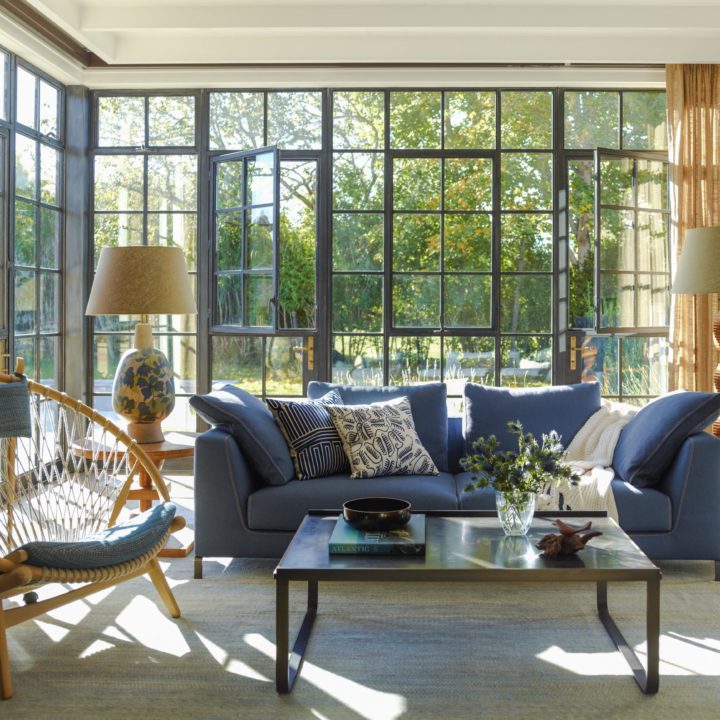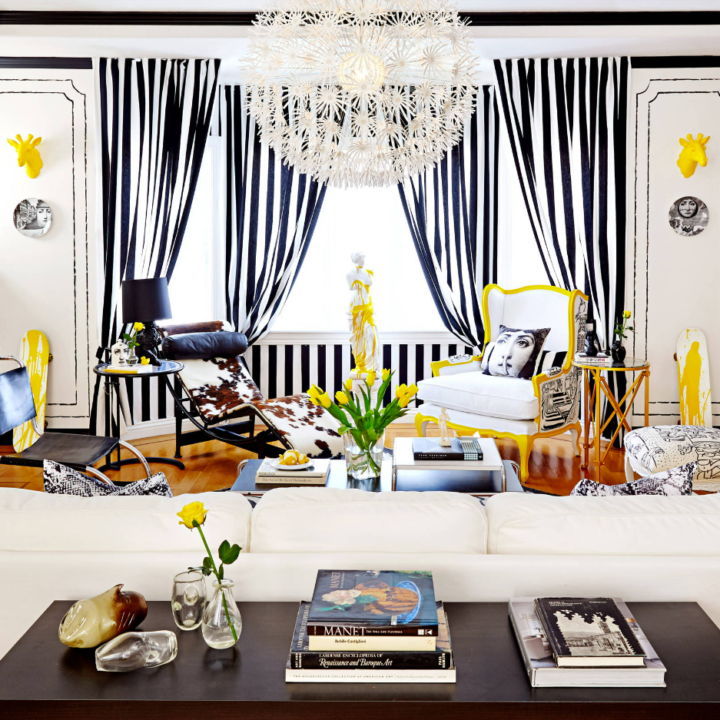Spiffy Speak
TOP TIPS & IDEAS FOR NURSERY CURTAINS

Preparing to welcome a baby is perhaps one of the most interesting phases of family life and nursery decoration might be its most exciting part. However, despite the joy and fun associated, the process can be weighing, even intimidating. The tendency to be swayed by aesthetic preferences is predictable, and want of knowhow is also real. If you’re currently trying to figure out the right nursery window treatment, you’re in the right place. Shopping curtains for nursery should be easier after reading this blog that puts together tips from our drapery experts to achieve the full potential of your nursery curtains – functionally and aesthetically.
Shop for custom curtains for nursery from Spiffy Spools. Like your baby’s own fairy godmother with a wand in hand, we can style your nursery as you desire- from pretty blackouts to dreamy sheers and cartoon prints to checkered flair, our vast collection of over 3000 fabrics has got it all for you!
Tightroping Function & Style: The Best Nursery Curtains
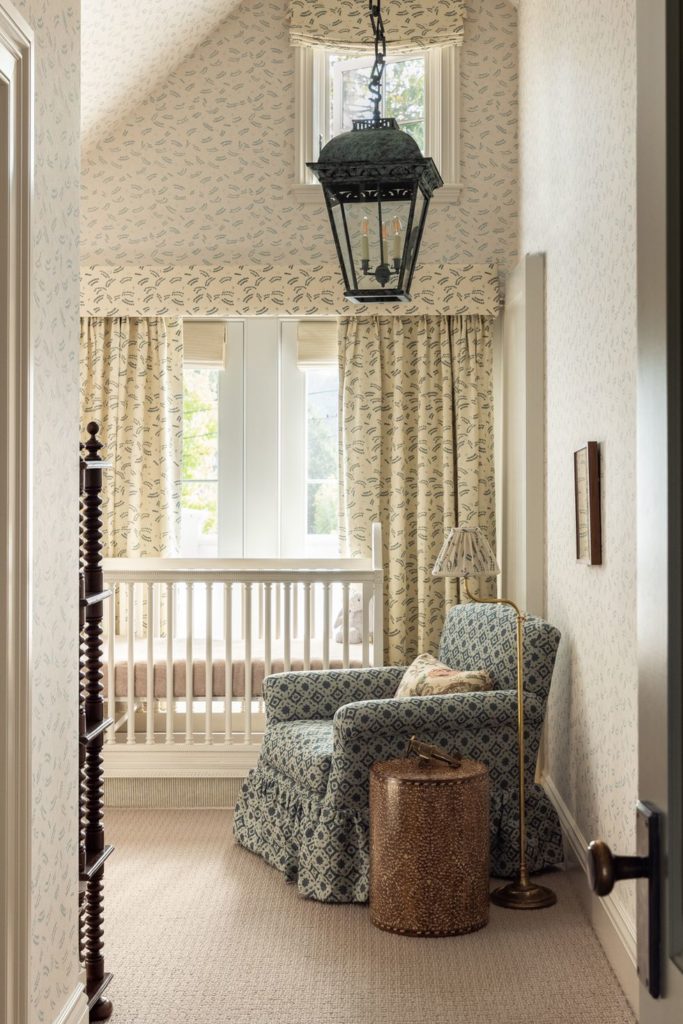
Bringing that perfect Insta-worthy nursery of your dreams to life is easier with curtains’ softness and bespoke charm. With endless choices of fabric, hardware, trimmings and designs, nursery curtains can not only host any color and pattern of your taste but also define your decor style. Over and above the aesthetic role though, curtains have serious functions to fulfill in a nursery, such as –
- PROVIDE PRIVACY: Like any other private spaces in a home, nurseries must be protected from outsiders’ views. Drawing the curtains not only fulfill this goal, but can also help the child to focus attention on the current activity and the caregiver, making it easier to be on the mark with the schedule.
- BLOCK UNWELCOME LIGHT: Window curtains are often what help a nursery to transition from a bright sparkly play zone to a cozy cocoon in an instant. Darken the room and the baby has no more visual distractions on the way to slumber.
- CUT THE CHAOS: Cutting visual noise is half the job done, and when the real ‘noise’ is canceled, the job is complete. The curtains must absorb unwanted noise from both the external and internal environment of the home so that distractions are minimized.
- REGULATE TEMPERATURE: In order to sustain a comfortable sleep, it is important to keep the room temperature steady. Keeping a heater/cooler working at its full stretch without doing enough to contain the thermal energy or cooling it generates is lost labor. The curtains must obstruct this loss and help sustain the most suitable temperature of the room throughout the night.
Design Tips for Best Nursery Curtains
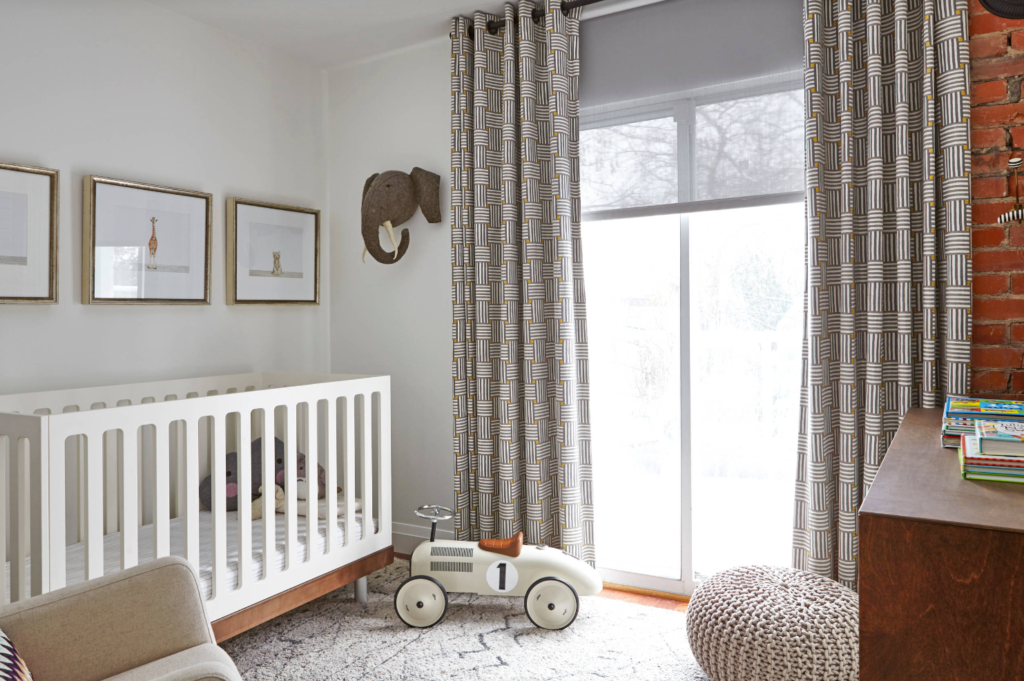
Since curtains have more expectations and unique needs to meet in a nursery, their are several factors to consider when buying drapery. Although a creative process, designing nursery curtains must aim for practical ease as much as visual attraction. Here’s what our home stylists have got to share from their years of experience in this field.
Get the Canvas Ready: Pick the Fabric Base
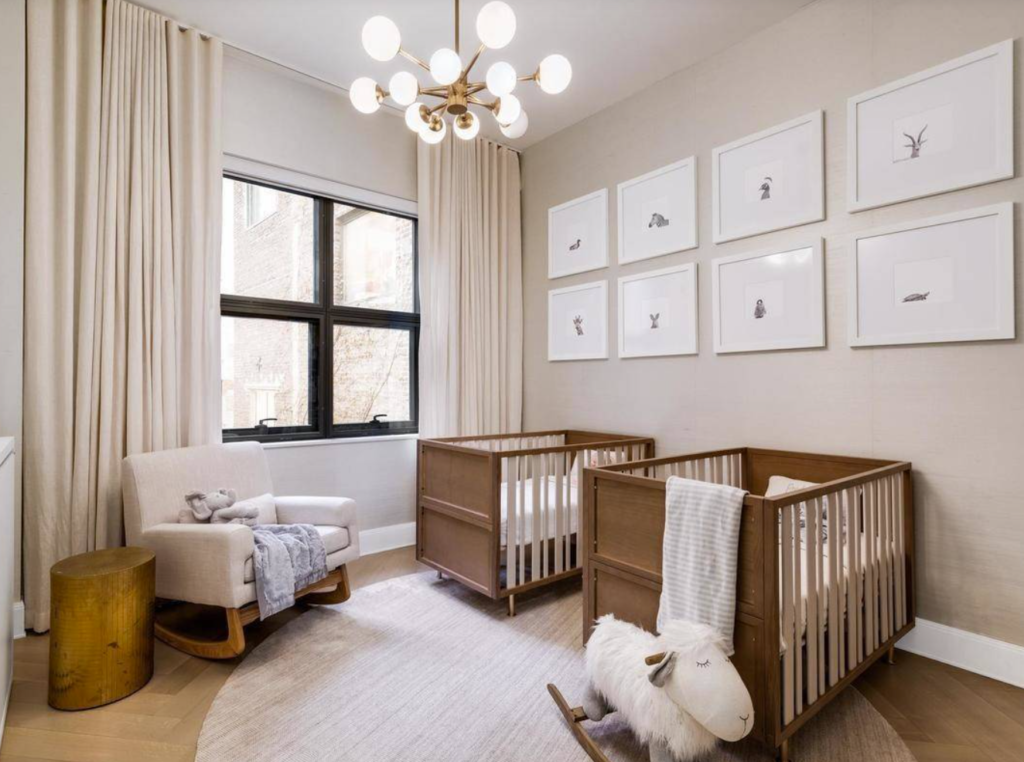
Curtains are your blank canvas where your imagination and love are going to meld and mold through colors and shapes. And so, first things first, pick the right fabric base to be that canvas where color, whimsy and wonderment can rise on the beckoning. It should be a fabric that best defines your nursery’s decor style and theme and also fulfills its functional requirements. Keep the following factors in consideration when finalizing the fabric composition:
LIGHT CONTROL ASPECTS: Nursery window treatments need to be highly effective at light-blocking, and therefore, fabric thickness and opacity is an important factor to consider.
If your nursery curtains are intended to be standalone treatment, we recommend dimout or blackout curtains. If you want the nursery to be as dark as a cave, go for blackout curtains like Silver Sand beige curtains from our collection. Dimout curtains, on the other hand, will darken the nursery substantially, but not make it pitch dark. Club Gold curtains from our collection are great additions to a nursery that’s looking for bright hues and considerable room-darkening. Their light-blocking capacity can be enhanced by using blackout lining behind.
If, however, you already have blackout blinds/shades fulfilling the goal of room darkening, and want to add drapes as a decorative layer, then you can of course consider a light-filtering, non-blackout fabric base as well. Sheer or semi-sheer curtains like our Butter Cream serve an example.
HYPOALLERGENIC FABRICS: Since infants need to be protected from allergens and infections, natural materials such as linen and cotton which are inherently hypoallergenic are recommended. Make sure that you choose fabrics that have a thick weave such as our Brook Cream pure cotton curtains so that they can block light effectively. With a blackout lining, they are as good as blackout fabric drapes themselves.
DECOR LANGUAGE: If ‘opulent’ and ‘ritzy’ are the first adjectives that come to mind when you think of your little prince or princess’ nursery, statement fabrics like silk or velvet are the default picks. If ‘cozy’ and ‘sophisticated’ is your target, cotton, linen and their blends should have the reign. So consider the overall decor language of your nursery before settling on your drapery fabric. And whatever face fabric you choose, make sure your drapery comes with blackout lining for room-darkening during baby’s naptime.
Work Magic With Your Paintbrush: Choice of Palette & Pattern
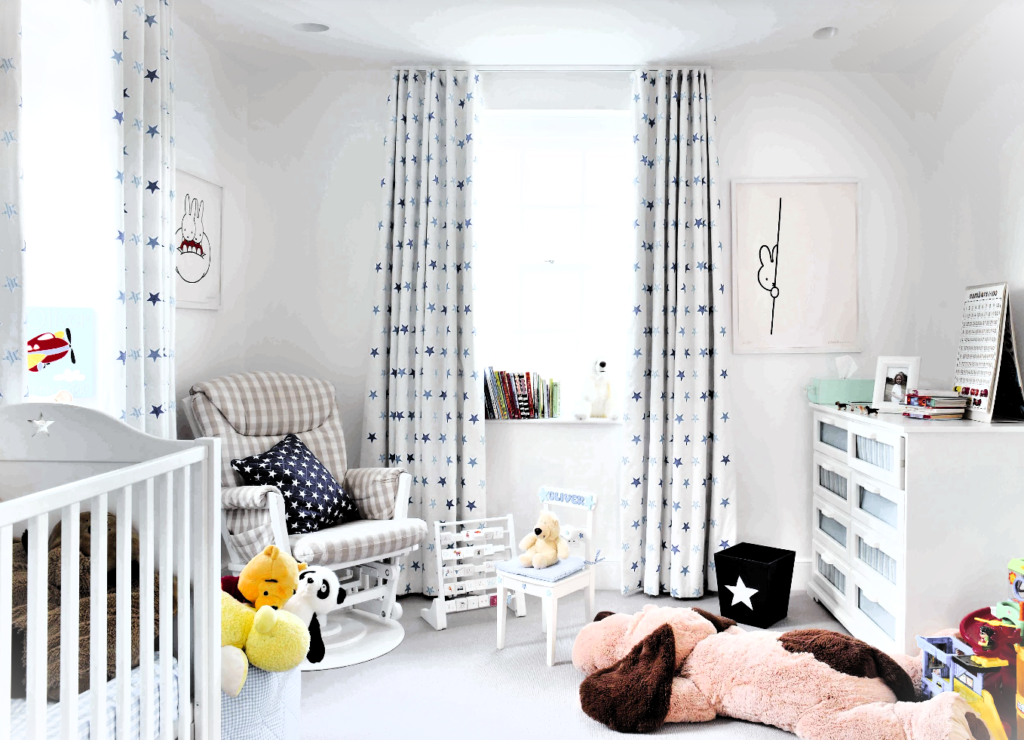
If your nursery is a tabula rasa at this point in time, the curtains can guide the color story of the entire decor, highlighting the palette at best. In fact, we recommend picking the wallpaper or paint color for the walls after finalizing the curtain fabric, as it’s relatively easier to find a matching paint than to start with paint and scout for coordinating drapery fabric.
If your curtains are going to be a substantial part of your decor because of invasive windows, we recommend going for softer hues that sync with your overall palette. This will provide the baby with a soothing ambiance for a restful sleep. Alternatively, if your window is small, bright colors may be less intrusive if you wish to go the bold way.
Motifs such as favorite cartoon characters and superheroes are popular, though we advise clients to factor in longevity before picking a tight-theme fabric that might fail to grow alongside the nursery’s inhabitant. Unless you envision swapping the drapes every couple of years, we recommend picking classic, ‘age-proof’ motifs or broader kiddie themes that can continue to adorn the windows even as your baby’s crib gives way to a toddler bed.
If you’re aiming for a once-and-forever gig, go for patterns that are neither age-specific nor gender-specific such as stripes, abstract prints, and plaids so that the child may never outgrow these choices. Drapery in fabrics like Summer Song or Birdhouse, for example, will never get outdated or outgrown by your kid – girl or boy.
On the other hand, if you want the nursery to rhyme well with your kid’s gender, consider demure florals and playful paisleys for a girlie theme, and geometric patterns with bold definitions for masculine underpinnings.
If you fancy younger, more playful patterns, consider keeping the motifs broad in themes so they are somewhat adaptable to changing preferences. For example, a fabric like Princess Pink will sync with many fairytale settings – from Cinderella and Snow White to Frozen and Sleeping Beauty. Similarly, our Peter Pan drapery has proven to be an adorable cityscape for many nurseries, easily adapting to changing preferences from Superman and Spidey to a superhero-free decor altogether.
Sprinkle Some Pixie Dust: Time for Endearing Embellishments
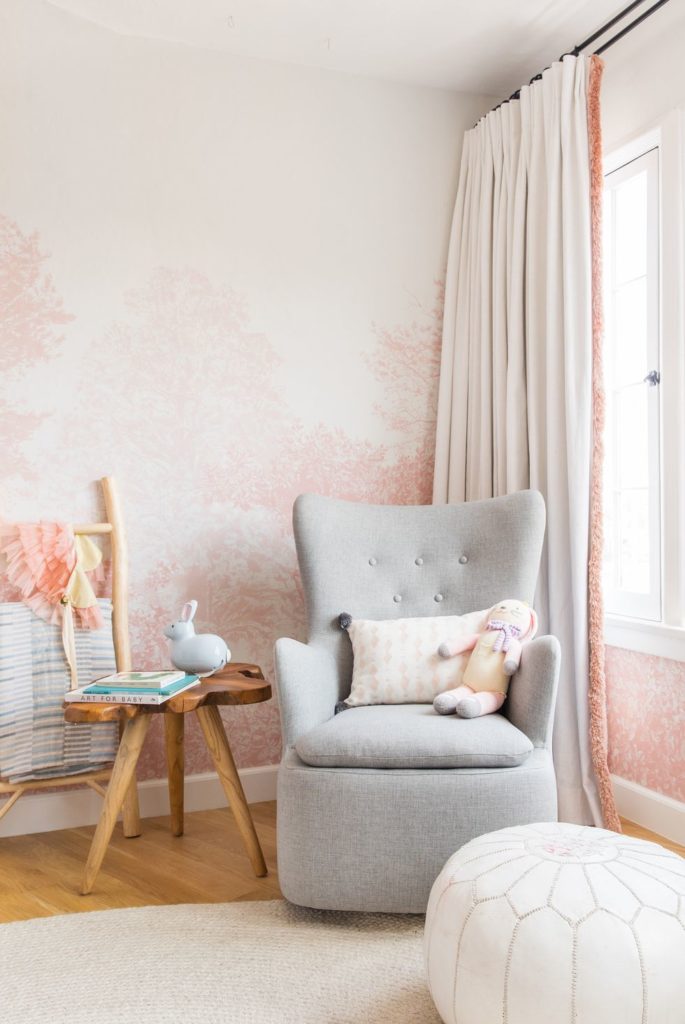
How can a nursery be complete without adorable knick-knacks that mirror the playful spirit pervading the space? The world of passementerie opens up an endless potential for customizing nursery drapes with embellishments that best suit your decor and overall visual appeal.
There are ribbon trims and gimp braids that can offer a lovely refinement to the curtains’ lead edges. For a ruffled finish with a texturally rich quality, fringe trims are remarkable.
Pom pom trims are another highly popular option for playrooms and nurseries, though we advise caution and to use these only if the child is either too little or grown up enough to not rip off pom poms, and expose themselves to dangerous sports.
These dainty details are not just meant to elevate the space or make it look more light-hearted, they also reveal how invested you were in the details of the nursery’s decor. It’s only custom-made drapes that can allow you the freedom to play with embellishments of your choice. So, no better way to show off that they are bespoke than to embark on their potential wholeheartedly and splash that pixie dust to complete the magic!
Cozy it Up: Dark & Snug is the Way to Go
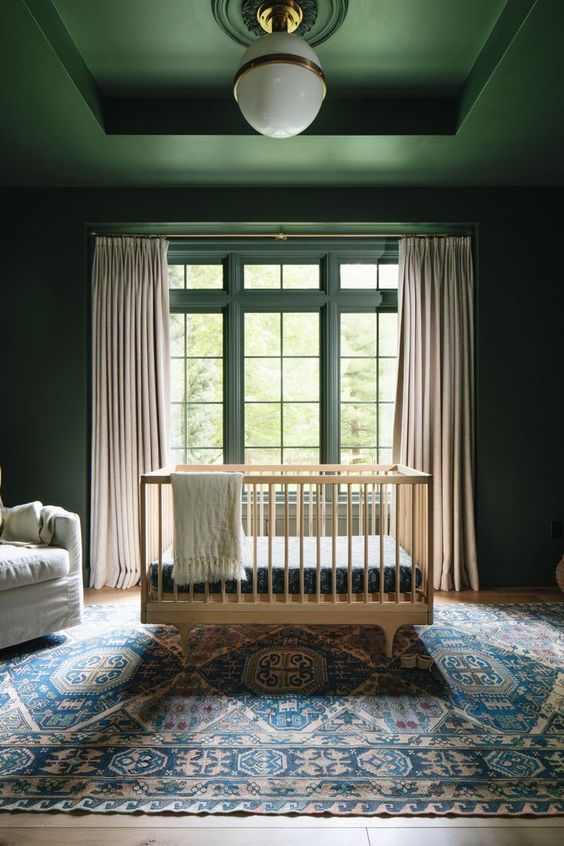
Opting for a blackout fabric/lining for nursery curtains is one of the key steps to make the space dark and cozy. There are, however, a few other simple measures that can contribute to the same goal. Let our stylists walk you through these below:
Heading Style
Often, clients make the mistake of choosing the best blackout fabric but picking a heading style that features gaps through which light will force itself in. Grommet tops, tie tops and tab tops are a few examples. You need curtains that hang flush with the wall and leave no possibility for light leaks through the header. Pinch pleats, rod pockets and flat top panels are a few styles that meet this standard.
READ MORE: CURTAIN HEADINGS STYLE GUIDE FROM SPIFFY SPOOLS
Hardware Placement
Mount the drapery pole at least 6-12 inches above the window trim so light leaks from the top may be canceled totally. Also, extend the rod at least 6 inches on both sides so light glows and leaks at the edges can be minimized.
Decide Length
For short curtains, ensure that the curtains don’t stop at the sill but proceed further down by at least 6 inches. This will help to control the fluttering as well as the light leaks from the bottom. For long drapes, consider the ‘kiss’ level that lets the curtains slightly graze the floor. Thus, you can cancel the harsh glare at the bottom.
READ MORE: HOW LONG SHOULD MY CURTAINS BE?
Palette Choice
Light-hued curtains will naturally reflect more light than dark ones. If you want your blackout fabric or blackout lining to perform flawlessly in achieving a pitch-dark nursery, you might have to consider dark-colored curtains.
Thickness and Weave
If you’re using a blackout lining, remember that they are efficient in themselves and yet perform their best only when supported by the face fabric. You can expect better results from a close-knit heavier cotton or velvet drapery set than a loose-woven linen curtain, both backed by the same blackout lining.
Layer for Additional Insulation
Putting up a thicker barrier to incoming light may sometimes require adding a layer. So, adding a set of light-blocking shades or blinds close to the window can aid the curtains further in creating a dark nursery for sleep time, acoustic efficiency being the bonus point. Besides, double-layered window treatments will trap air between their layers, providing an extra barrier between the cold external atmosphere and the warm air of the nursery. Invest in energy-efficient shades like cellular shades and blackout roman shades if you’re dealing with extreme weather conditions.
With all these factors keenly attended, you will have created the best room-darkening curtains that make your little one’s sleepy corner warm and snug for a whole night’s undisturbed sleep.
READ MORE: KID COUTURE: THE BEST ROMAN SHADES FOR NURSERY
Baby Shield: Make the Curtains Gentle and Safe
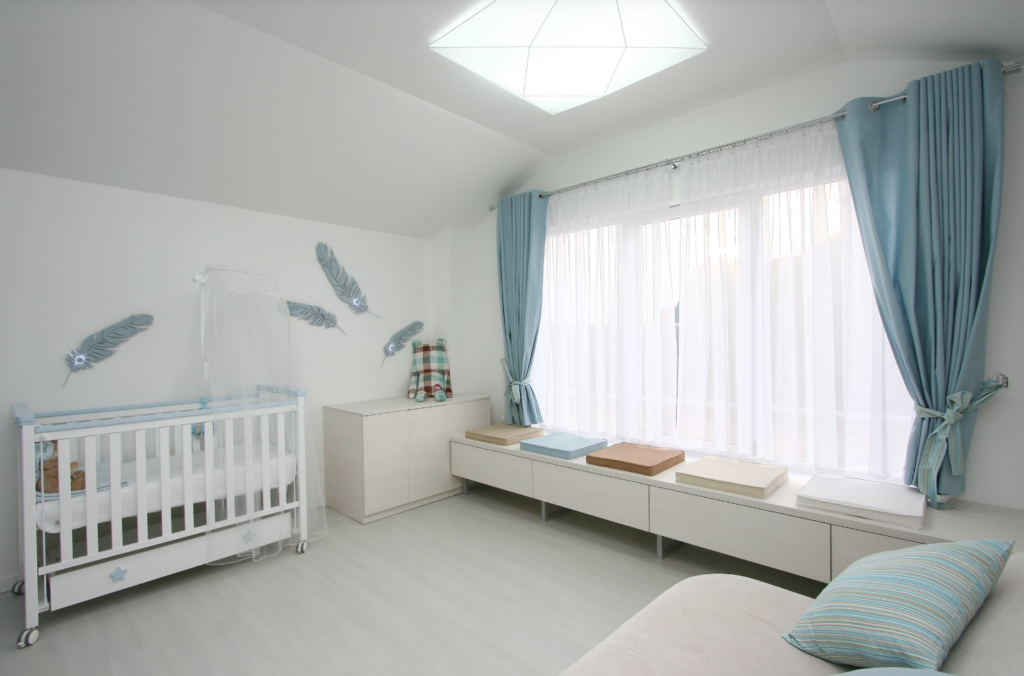
The curtains may block light and look charming, but they’re still not on point if they are not safe for your baby. At every juncture where a design decision has to be made, safety issues should be given adequate consideration. We’ll walk you through them one by one –
LENGTH: While we are fans of flowing drapes, in nurseries, we find short curtains more practically relevant. You can rest easy that the baby won’t crawl into the puddles and get entangled or use them as a ready swing for playtime. This saves your little one from potential accidents and the drapes from doubling up as baby wipes. But, if you can restrict access to the windows by strategically arranging the furniture, look no further than long drapes as they look more elegant and block light more effectively than sill-length curtains.
HARDWARE: Your tiny tot may enjoy giving the curtains a playful tug now and then, bringing them down if the hardware gives in. That’s why, invest in high-quality fittings that can be screwed tightly to the wall. Never use tension rods or alternatives like low-quality command hooks as they may fail to withstand pressure.
FABRIC: Although kids may not have much direct skin contact with the curtains, it is important to make sure the fabric does not have any allergens your little one might be sensitive to. Some kids might be more susceptible, and hypoallergenic, natural fabrics like pure cottons and linens might save the day.
EMBELLISHMENTS: Something good turns worrying only when it crosses a limit. Without stunting creativity, you can dress your nursery curtains with embellishments that speak to the kid’s liveliness. Avoid curtain trims and tiebacks with baubles and loosely dangling tassels that a baby can easily pluck out and attempt to swallow. Instead, opt for trimmings such as ribbons, fringes, and gimp braids that can easily bring a twinkling gleam to your nursery without posing any risk to your baby.
ADD-ONS: On a nice, breezy day when your toddler is playing on the floor, you might find your long drapes annoyingly fluttering. Invest in tie-backs and hold the curtains secure to the walls so that their movement is controlled.
Concluding the Feat
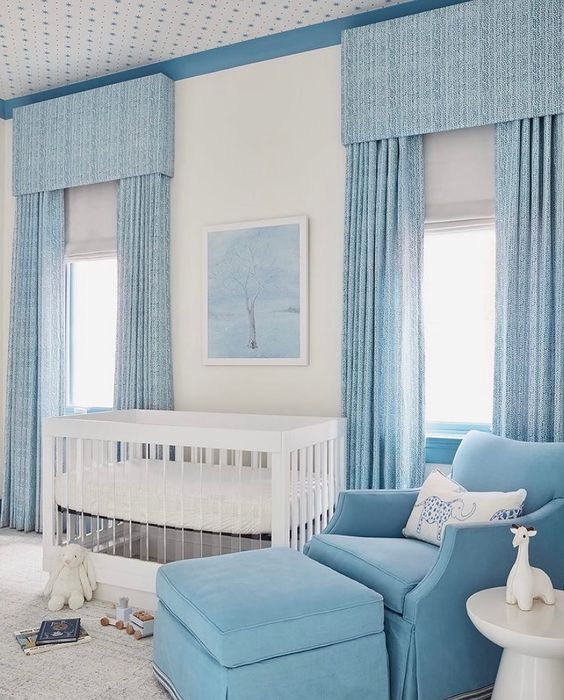
While it’s essential to style your nursery curtains to match the feel of your nursery, you also need to ensure they function flawlessly. We hope that this blog has expanded your vision and imagination to better design your little angel’s sweet abode without losing sight of the functional efficacy that’s equally important. Contact Spiffy Spools with your queries, if any, and browse our collection to create the nursery curtains of your dreams. Happy draping!
READ MORE: TOP SEVEN MISTAKES TO AVOID IN NURSERIES AND KIDS’ ROOM DECOR

